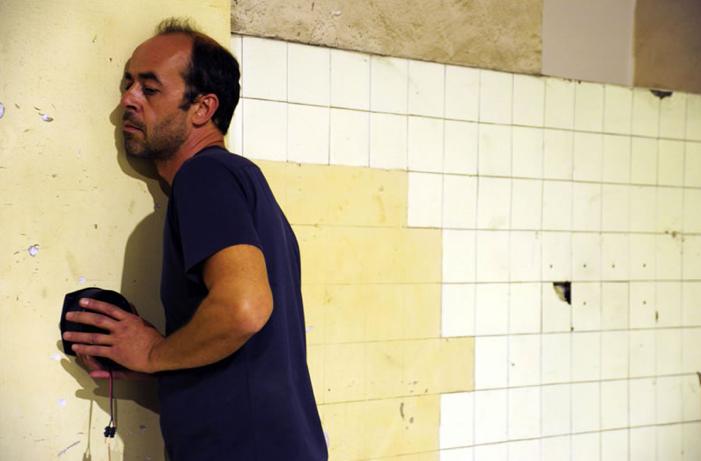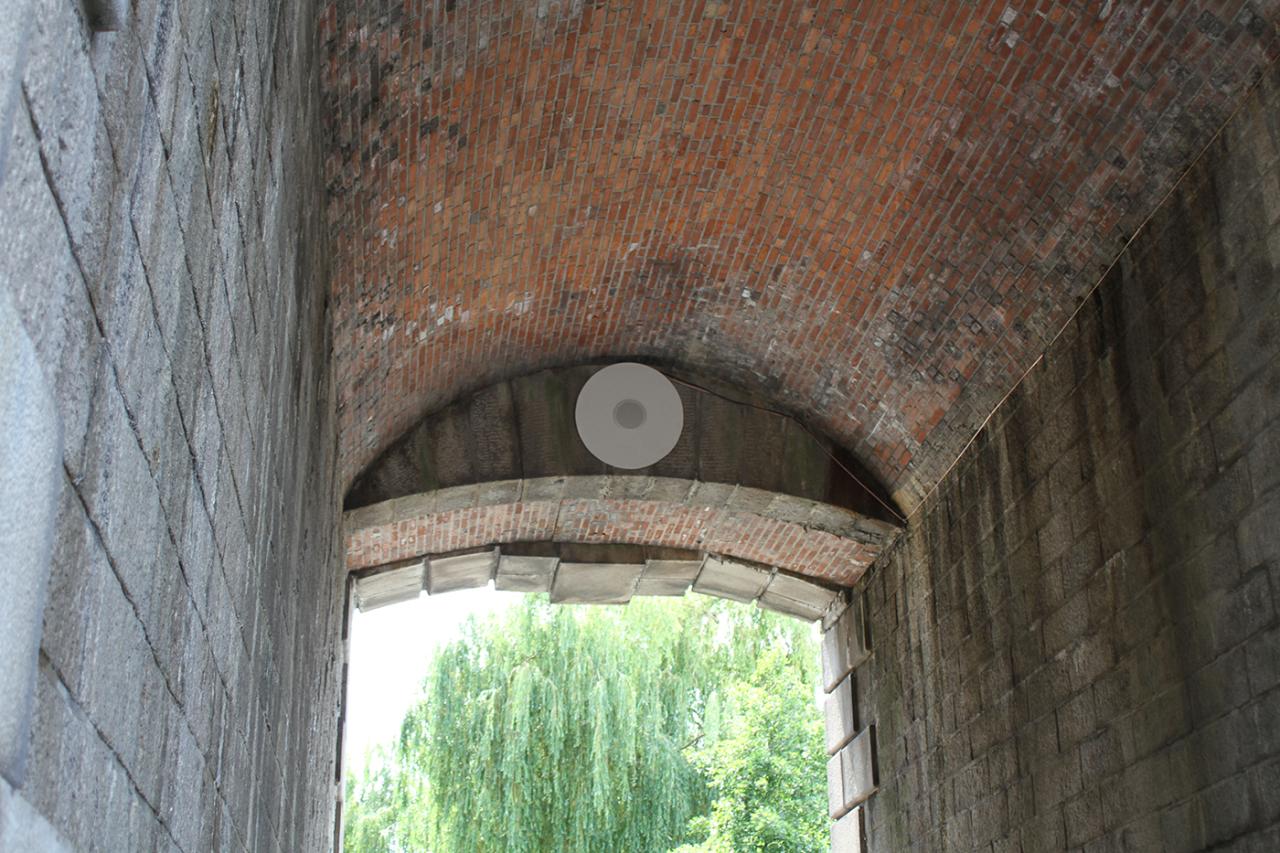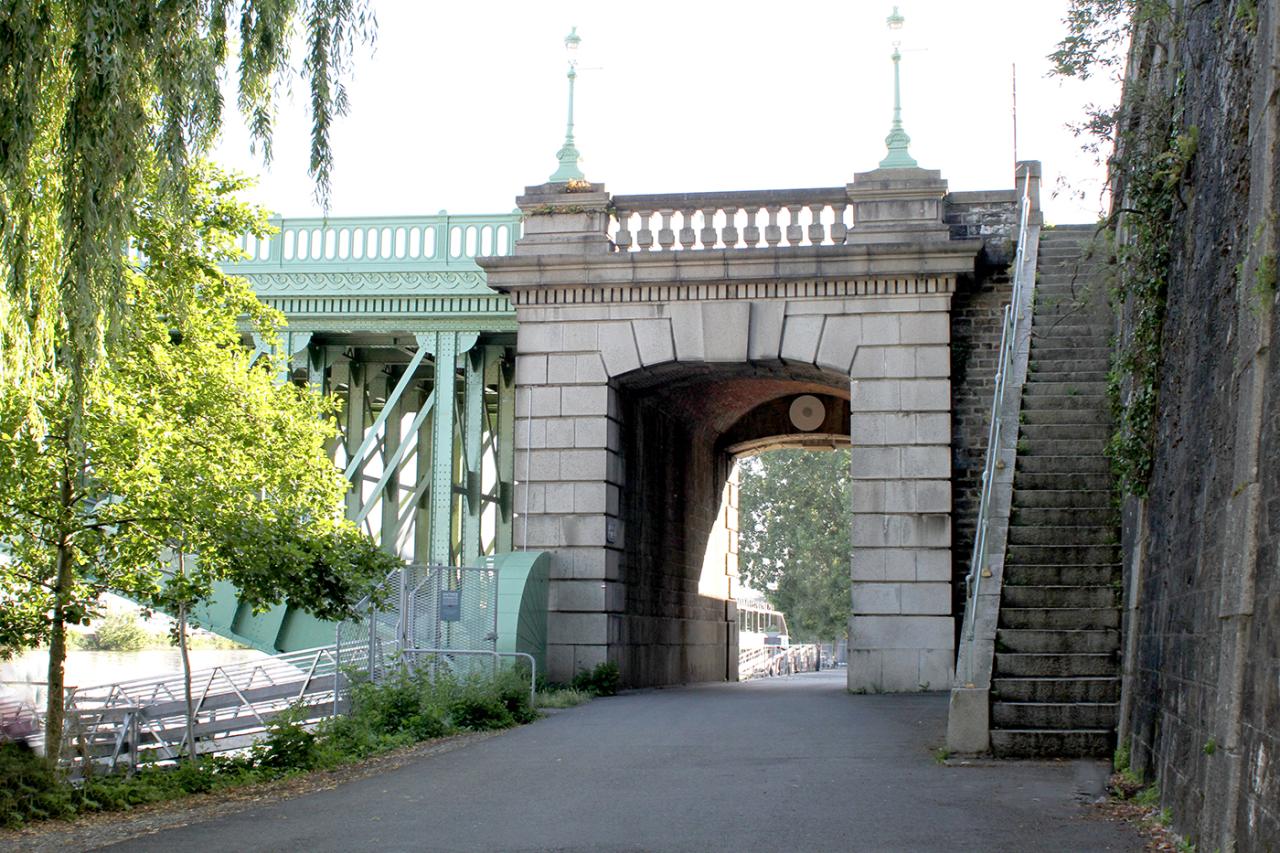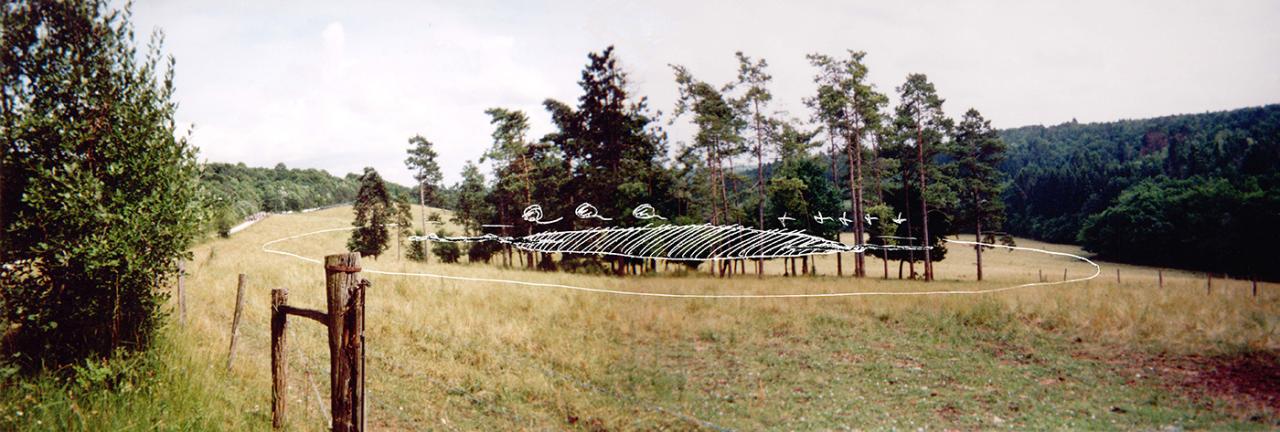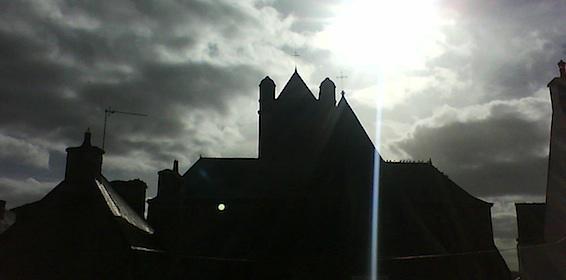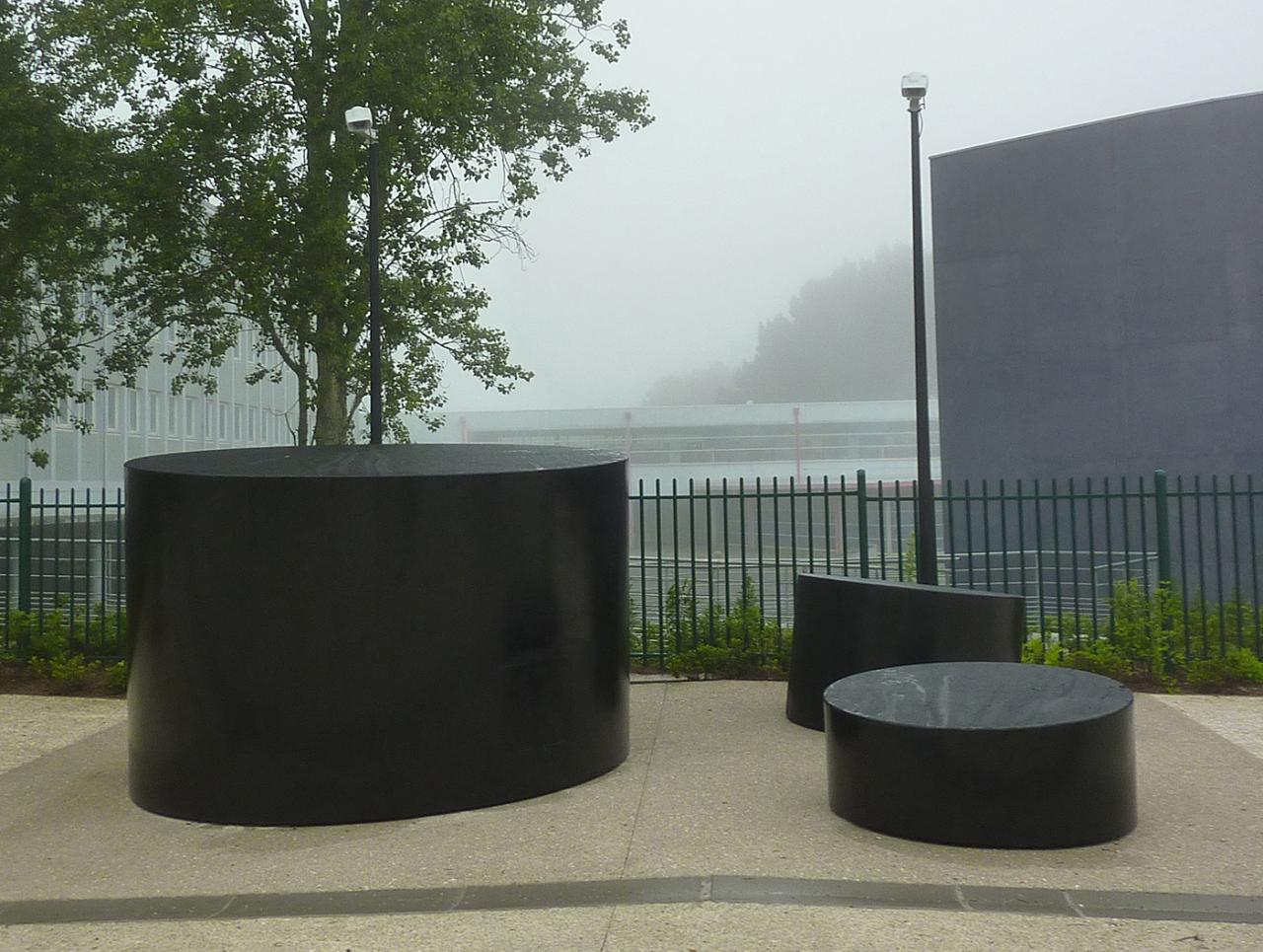Hughes Germain
The “Motionless” Time-Frame of Sound
Communion with sound has always been bound by time. […] The works collected in this volume share a different fundamental idea – that of removing sound from time, and setting it, instead, in place 1
With these words, the artist Max Neuhaus—one of the pioneers of sound installation and one of the most significant references for Hughes Germain during his years of training—defined the basic principle of his “place works”: abandoning the organization of sound in time to construct sound experiences in space. Germain’s research—he is an artist active in the arena of the visual arts and music, as well as dance and theatre—stems precisely from a line of thinking about the relation between sound and space, about spatiality, and plasticity, and what he calls the “motionless time” of sound. His intallations are not spaces filled with sounds, but places defined by sound: auditiory topographies to be experienced by passing through them. Produced in exhibition venues and in public places, based on a palette of sounds first recorded and then “sculpted”, Germain’s installations are discreetly, almost stealthily, incorporated in environments; they do not impose themselves, and play on anonymity and thresholds of perception. His most recent projects usually occupy “natural” places, or, rather, landscapes shaped by man, in order to explore the sound environment, invite people to listen, seek out relations between nature and culture, and sow doubt by introducing almost imperceptible changes into the site... In this conversation with the artist, we broach some of the vectors which constantly recur in his work: his approach to the recording, plasticity and materiality of sound, the relation to the public place, and the re-contextualization of field recordings to give another meaning to space.
Elena Biserna: Your activity has been hallmarked since the outset by the use of recorded sounds. In this respect, your approach seems to me to be very personal, quite different from that of field recording, and from that of concrete music...
Hughes Germain: I’m fascinated by sound as a form of matter that can be shaped, “beyond time” or over a “motionless period of time”. So to a great extent the sounds I record are chosen in this spirit and I shape them as available and infinite forms of matter. I’m fascinated by the tone, colour and inner structure of sounds, the space which appears, the layers, the micro-rhythms of textures... I think I’ve developed a personal colour in my sounds, one that’s recognizable in this sense; in a way, this interests me much more than the time-based organization of sounds among themselves! So, in a tangible way, sounds are very often loops, quite short extracts which are repeated, but in which, it just so happens, you don’t hear the repetition. So you can concentrate on the matter rather than on how it unfolds. On the other hand, the recording of sounds is almost always done for a project, in relation to a place. It’s a “conceptual framework” for the idea, which gives me great inner freedom; pushing me to look for things in the sonorities peculiar to the place. This stops me from going astray in the endless possibilities of recording... I’m absolutely not someone who always has a recorder with him. On the other hand, I’m always listening, yes...
EB: In my opinion, this reveals an approach to sound coming from visual arts, as if you were constructing a palette to be developed in space, with sound textures creating volumetric relations to places and architectures...
HG: Yes, space is present at several levels; at the source, real space, of course—I record a lot quadriphonically, so with four mikes, to have a very immersive effect. The way this set of mikes is placed in relation to what is being recorded is also crucial, but the “sensed” space is even more important; inside sound itself, there’s this “feeling of space”, of depth, that it can give us, successive levels, and volume. Lastly, the re-development in space, real once again. And here the loudspeaker system makes it possible to play with place. In the idea of a palette, it’s true that I often assign sound loops to a series of volume knobs, to be able to play with them “a-gogo”, and easily construct a sound grid in the place, in quite an intuitive way, without a mouse or screen, just focusing on listening.
EB: I’d say that there’s more to it than that: your approach to space isn’t just connected with its physical and phenomenological aspects; your more recent projects broach spaces in their cultural, symbolic and at times ecological dimension... In this respect, it seems to me that one of the strategies you often use is re-contextualization: the shift of a sound from one place to another in order to re-signify that place and that sound.
HG: Yes, that’s true, but by manipulating ideas, by making gaps and discrepancies, even quite subtle ones, I always try to stay as close as possible to sensation. Manipulating sounds the way I do is already a conceptual involvement per se. I don’t have any desire to make ideas visible; it’s rather the idea that is creative for making matter. I try to keep the idea light and poetic, in such a way that it appears as something transparent...
There are two paths to take: understanding the work, and understanding how it has been constructed, made, and so on... and you can get a direct, affective, sensory reading that doesn’t pass by way of the intellect. These two ways of reading the work are important for me.
So when I add a voice every time a church bell rings, and you can hear it as well as the bell, all over the city, that’s something very sensory, not to say sensual: it re-draws the sound of the bell itself, with a female voice. So that can give rise to ideas in all of us, you can make parallels, you can think about it... But somewhere in there that whole particular path is no longer mine; it’s up to each one of us to take it, and it’s up to the artist to come up with proposals that are rich enough for several meanings to result from it, for it not to be confined, so that there are several readings...
EB: Here you’re talking about your installation Clochers/Bells (2010) at Rostrenen... And here, as in other projects, you were working in public space. That can’t fail to involve a close relation with the social space, everyday life, and a desire to address different kinds of public. Your approach often seems to me to be hallmarked by a determination to make your way into those places, while at the same time looking for anonymity and discretion, and playing on the dialectic between what’s perceptible and what’s imperceptible.
HG: When all is said and done, what I want to do is create a surprise, a questioning about what people feel, almost unbeknownst to them. I’d like the issue not to be art, and its presence, but rather to do with giving rise to that moment when you’re lost, when you’ve quit common reality, when our hearing plays tricks. “But what can you hear?!” or “I’m not feeling his place the way I usually do”... On the whole, this sensation can only arise because people are open to it, or may even desire it—I get involved in day-to-day sounds, and the ear issues a warning, indicates something that is not altogether connected with the rest. Here a bubble opens and, instead of hearing, people start to listen. Otherwise, in the end of the day, it’s quite easy to catch people with an impressive sound volume and impose yourself, as if with a hammer. But it doesn’t last... I’m always thinking about the permanent people in exhibition venues. They’ll experience sound in a continuous way. If they can’t handle it, they’ll stop it (or at least wait until someone comes to get it going!), that’s for sure. So how do you make a sound environment that can simultaneously grasp the listener when he arrives, and remain easy to listen to, rich, and not wearisome for the watchman keeping an eye on the exhibition? This is a pretty pivotal question, come to think of it...
EB: Remaining discreet and at the same time creating gaps and discrepancies in space by way of subtle vibrations, which might go unnoticed, or else introduce doubt... I’m also thinking of the piece you’re working on right now, Chaud/Change [Hot/Change], where, for once, you’re not using recordings and you play on the relations between nature and culture to trigger a line of questioning about climate change...
HG: The idea is to broadcast false cicada sounds in places where they don’t usually live, and spread a bit of “fake news” around to help push the news about: if cicadas have arrived here, it has to be because the climate has changed. The cicada is an extraordinary animal, producing an extremely loud sound, within a frequency range where in the soundscape there is not much, with a tone closer to the electronic than the natural! What’s more, in a cultural sense, this is a sound that’s predominantly associated with the south, and heat. But I don’t want to hoodwink people, or if I do, only for a very short time: anybody listening will easily hear the rhythmic interplays between the differemt modules broadcasting the sounds, from tree to tree, in a very broad multi-broadcast. On the other hand, sounds that alert you, like those when you receive a message, do appear from time to time—in fact all this is quite musical! But I’m sure that when you walk on a beach in Brittany, if there are cicadas, even strange ones, in the pines, you go along with them...Until the day when, around an event, the trick comes to light! This is a way of tangibly showing a climatic consequence, while providing acoustic pleasure, within a living sensation.
EB: The plastic quality of sound that you work with is also associated with its material quality: sound is above all vibration, and this vibrating nature of sound often lies at the hub of your installations.
HG: I sometimes get the impression of being in something that’s full, or solid, that the air is a kind of palpable matter, that’s almost visible. I think this is an essential feeling for manipulating sound matter. When I broadcast sound through several loudspeakers, usually quadriphonically, this isn’t to get the sounds to circulate, to make movements, but rather to be better able to set in motion the air bubble that we’re in. And this conception is especially valid in the large venues where I’ve had a chance to play with contemporary dance, where those large and very precise systems really make it possible to “set the air in motion”! Feeling the sound becoming more precise and quicker, with the air becoming warmer and more humid with an audience there. That is something very real! There’s no separation between the vibrating object, the air, and the ear. Everything is connected, and in contact...
Translated by Simon Pleasance & Fronza Woods
Note :
1. Max Neuhaus, Sound Works, Volume III, Place, Ostfildern-Stuttgart, Cantz, 1994, p. 5.
